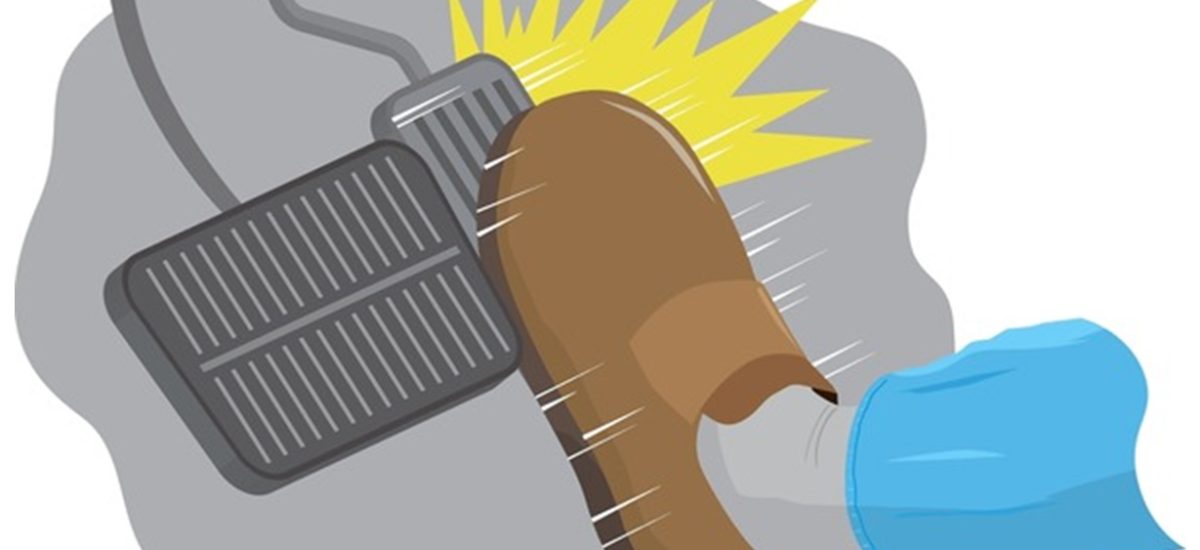Licensed under Shutterstock
My last post resulted in a particularly good question – given that there were top-down measures of central nervous system (CNS) hyperexcitability evident in the person with lived experience ( PWLE) pain, how do you test for temporal summation (TS) and conditioned pain modulation (CPM). Great question, and apologies for the oversight in not covering that ahead of time. Well, here goes.
Temporal Summation (TS) – the accelerator
Temporal summation and CPM are terms used to describe central nervous system (CNS) transmission and processing of pain. To simplify this somewhat, we can think of TS as being the accelerator pedal – whereby transmission of nociceptive information occurs (after tissue damage for example). For testing TS, a more than uncomfortable sensation (e.g. skewer) is applied at a constant rate (more than once every 3 seconds) to a non-painful region of the body. Ten repetitions of this stimuli are usually applied. Temporal summation refers to the change in pain that occurs over time – i.e. the ‘wind up’ of the CNS. Thus, it is the difference in evoked pain levels between the first and 10th stimuli. The ratio could also be calculated, although this gets complicated if the first pain level is zero, whereby a ratio cannot be calculated. Those with a facilitated response (think of pedal stuck to the metal), will report a greater difference in pain between the 1st and 10th stimuli. However, caution is required, as the PWLE may report a remarkably high initial pain level with the first stimuli, and other people are unable to complete x10 repetitions. Generally, this test is used in a laboratory, and the responses are measured statistically against a group of healthy people. Thus, a positive test within a clinic is hard to determine and may not be clinically meaningful.
Conditioned Pain Modulation (CPM) – the brake
CPM is the human assumed version of descending nociceptive inhibitory control demonstrated in animal research – that is, a measure of the ability of the CNS to inhibit incoming noxious stimuli – a filter so to speak. It is akin to the brake pedal preventing us from accelerating into trouble. We are generally very adept as humans at distracting ourselves from non-threatening stimuli. However, in some, this response is not ideal, and the ‘pain distracts pain’ phenomenon is not efficient. So, how do we evaluate this? An initial test stimulus is applied to a non-painful body regions – i.e. a pressure sensation, and the person indicates when the pressure first becomes painful (i.e. pain threshold). This can be evaluated with pressure, thermal or electrical stimuli. Alternatively, a known stimulus strength is applied, and the person rates the pain level. Then, a noxious conditioning stimulus is applied to another body region. This can be hot or cold water, or even a blood pressure cuff used to occlude blood supply into a limb. Once this conditioning stimulus is applied, the test stimulus is re-applied. The difference in pressure applied, or the difference in pain levels reported when the conditioning stimulus is applied is then recorded. An effective response involves the report of a higher threshold being required to reproduce pain, or lower pain levels when the test stimulus is re-applied.
What Might This Mean Clinically?
Clinically, facilitation of TS leads us to think that repetitive stimuli applied to the body will result in an amplification of pain throughout the CNS. Thus, as an example, a walking program, or worse, dry needling, whereby stimuli occur more regularly than once every 3 seconds, may result in amplification of pain in the affected body region (e.g. neck).
As far as CPM is concerned, spatial discrimination is generally required to differentiate two different body regions of pain. Thus, if this is aberrant, it is not unreasonable to think that a PWLE will have challenges in focally describing their pain and as stimuli are repeated e.g. if a person is deconditioned and given an exercise program and develops soreness, then the PWLE will not be able to differentiate various different bodily regions of pain – i.e. a spread of pain occurs. Thus, it is not surprising that those with widespread pain or fibromyalgia have previously demonstrated deficient CPM responses.
So, recognizing deficits is the first task in assisting PWLE. Treating these deficits is the next challenge! We will cover the clinical implications and possible treatment options in a separate blog.





